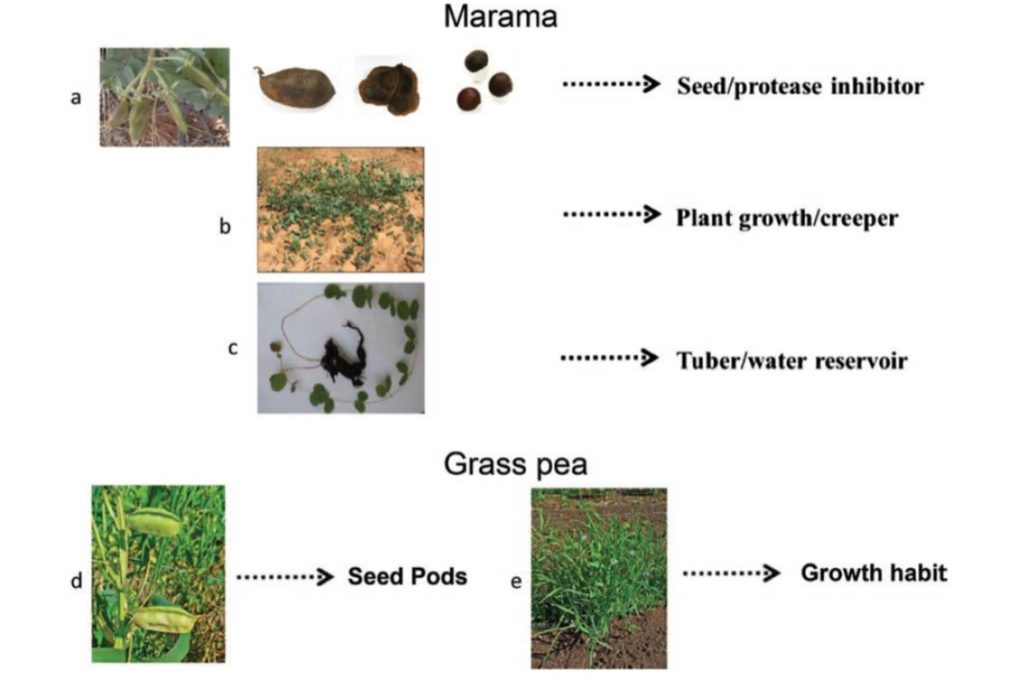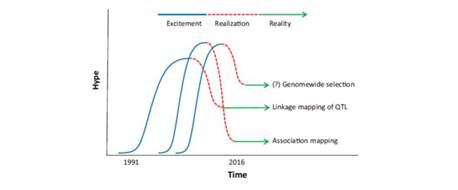
Review: Unlocking the potential of orphan legumes ($)
0 Comments
/
Orphan legumes, which include cowpea (Vigna unguiculata), Bambara groundnut (V. subterranea), grass pea (Lathyrus sativus) and marama bean (Tylosema esculentum), are important food sources for many farmers, but have largely been ignored by breeders and industry. Cullis and Kunert argue that some of these…

Homeodomain protein underpins leaf shape variation in cotton ($)
Homeodomain transcription factors are well-known as regulators of developmental patterning, including in leaves. Andres et al. examine the molecular basis behind leaf shape in cotton, particularly the Okra locus that was identified by breeders as a regulator of leaf shape. They show that the Okra locus…

A PNAS trio: DNA methylation and small RNAs in plant reproduction
Three PNAS papers explore DNA methylation and/or small RNAs in plant reproductive development. In angiosperms, sexual reproduction is accompanied by DNA demethylation in certain tissues, particularly those that have a nutritive or supporting role. Park et al. (10.1073/pnas.1619047114) show that in…

Opinion Paper: Bandwagons I, too, have known (reflections of a plant breeder) ($)
In this entertaining Opinion article written for the 150th anniversary of Mendel’s seminal work, Bernardo reviews “bandwagons” that have come and gone in plant breeding. Early bandwagons such as induced polyploidy are discussed, as well as more recent trends such as trangenics, molecular markers…

Review: History of Solanaceae family in genetic research
Plants from the Solanaceae family had, and continue to have, fundamental roles in plant genetic research. Gebhardt summarizes the historical contributions of the Solanaceous plants tomato, tobacco, petunia, potato, pepper, and eggplant. The tomato has been a model plant for studying fruit traits…

Gene editing to produce doubly-determinate, early-yielding tomatoes ($)
Tomatoes have an indeterminate growth pattern that arises from the balance of flower-promoting (florigen) and flower repressing activities. Suppressing this flower-repressing activity leads to greater determinacy and facilitates cultivation. Soyk et al. compared flowering times in short- and long-days…

Genetic basis of primrose floral dimorphism
Self-fertilization in Primula is avoided by the production of two flower forms (morphs), one with a long style in which the stigma is elevated above the anthers (the L morph or pin) and one with a short style in which the anthers are well above the stigma (the S morph or thrum), although there are also…

Review: Competence to flower
The transition between vegetative and reproductive stages in the plant life cycle implies a change in the developmental program of the shoot apical meristem to stop developing leaves and start developing floral buds. The factors that allow this transition to happen are many and the underlying mechanisms…

Best of 2016: Top Topics in The Plant Cell journal
We’ve highlighted some of the Plant Cell papers that were widely shared, liked, blogged, retweeted and otherwise garnered high-levels of attention this year. Perhaps you can use some holiday-season quiet time to catch up on those you missed.
Reviews and Perspectives
Creating order from chaos: epigenome…

